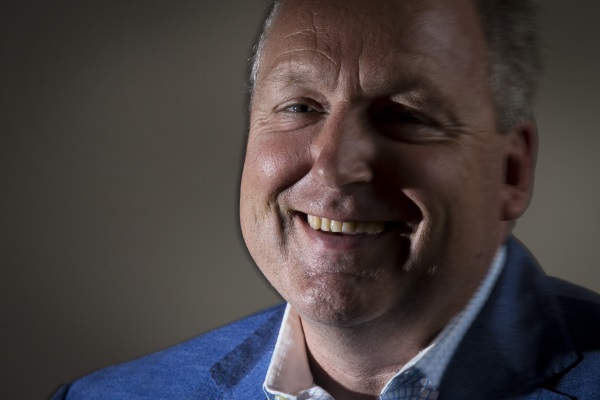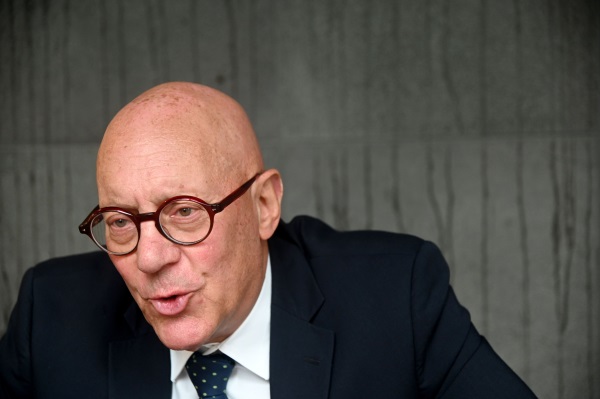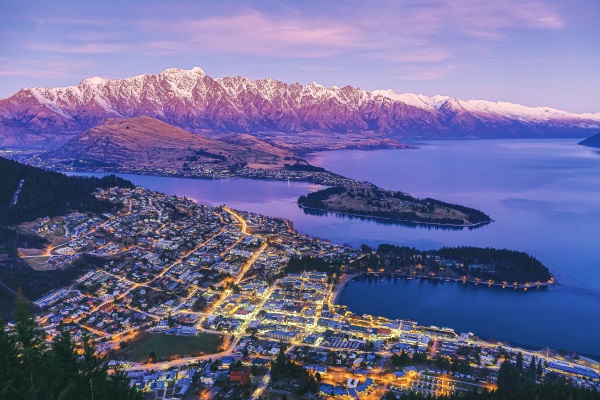Could it all be as simple as one new power line?
That’s the working theory of two heavy-hitter Queenstown businessmen, who believe installing a new power cable between Kingston and Queenstown — potentially using excess supply from Roxburgh — could go a long way to fixing Queenstown’s infrastructure issues and make the resort a world leader in electric tourism.
It would also result in another world-class cycle trail.
Former mayor Jim Boult and Xero founder Rod Drury have been working behind the scenes for the past year on the plan, and say they’ve got buy-in from power companies, government ministers, Queenstown’s council and a host of others.
Drury says the ballpark cost of the line would be between $60 million and $120m, but believes there are plenty of green funds across the world looking for innovative projects to invest in, and this one could pass muster.
The new line would super-charge Queenstown in terms of power supply and improve reliability, thereby unlocking a multitude of opportunities for electric vehicles and electric marine.
It’d also help diversify the resort’s economy.
Boult notes one of the problems establishing tech businesses here is a lack of a reliable significant power supply.
‘‘This idea fixes that problem.’’
Super-charging public transport
Boult’s dream is to dig the trenches for the new cable on top of which a new trail could be built — Drury adds it could be a tourist-pays ride to help offset the cost of the infrastructure.
Work’s already under way to electrify one ‘‘finger’’ at Frankton’s marina, to enable electric marine, which paves the way to introduce an electric foiling ferry to Lake Whakatipu, to run between Kingston and Queenstown.
People who biked to Kingston could hop on to return to Queenstown, or vice versa, and it would also double as a public transport option for Kingston, where 1000 more sections are consented.
On public transport, with abundant electricity micro-autonomous buses could be a real option.

‘Business case stacks up’: Queenstown businessman Rod Drury. PICTURE: NZ HERALD
‘‘As everyone knows,’’ Drury says, ‘‘Waka Kotahi’s transport solution, at the moment, is, like, 26 sets of traffic lights’’.
‘‘We need to be the place where we look at that innovation in transport and it must be autonomous, because we’ve got to get a bar worker home at 2am and a ski worker to the hydrogen bus at 6am.
‘‘So we need an automated 24/7 public transport system and green funds around the world are looking for projects to invest in.’’
Boult: ‘‘We’ve decided it’s doable, but you need the power supply.’’
Aim to flip rental vehicle fleets to electric
They’ve also got rental vehicle fleets in their sights, hoping to mandate a switch to electric rental cars and campervans in Queenstown.
‘‘That’d be a major boost to New Zealand’s economy, they say.
Boult: ‘‘At present, if somebody rents a car and it’s run on petrol, that is money being spent on an overseas commodity.
“It’s money that should stay in NZ going offshore.
‘‘If they’re using electric rental cars, because the marginal cost of producing more power is three-fifths of sweet all, that money is staying in NZ, and there’s more money going round NZ to do the things we want done.
‘‘It’s better for the NZ economy, generally, to have that money trapped in NZ, rather than having it spent on petroleum products we have to import.’’
Drury adds if more electricity’s used, it increases the demand, which leads to further investment.
‘‘The business case becomes really commercial for more electricity lines, and that leads to this bigger goal of not talking about just decarbonisation.’’
And, if a mandate could be given for electric rental vehicles, the business case for getting new power lines also stacks up.
While he’d like that to happen within five years, Rental Vehicle Association chief executive Ben McFadgen says that timeline’s
unrealistic.
McFadgen says it’d be ‘‘absolutely wicked’’ if the pair can pull it off and is fully supportive of the idea, but thinks 10 to 15 years is more realistic.
That’s because of the international supply chain required for the infrastructure to create more charging stations, which need more land, and delays in getting EVs into New Zealand.
Further, the bottom lines for rental vehicle companies have been badly affected by Covid, meaning it’s cost-prohibitive to switch out entire fleets.

Boult says that’s fair comment.
‘‘It’ll take some years to achieve this, the important thing is we say we are going to buy into this and achieve it.
‘‘Imagine the good that would come out of Queenstown being effectively the first electrified tourism resort in the world?
‘‘Think of the marketing edge that gives us, which is also in tune with moving your average tourist to higher value.’’
He says the plan will require buy-in from central government — the pair intend to engage with the next government as soon as possible.
But they’re also keen to get feedback from anyone on the plan, noting they’re pushing it because ‘‘it’s just a good idea’’.
‘‘Like all things, this will take a while to kick in,’’ Boult says.
● Thoughts, comments, ideas? Email [email protected]
‘Too early to commit’
Aurora Energy’s asset management GM Glenn Coates says there’s a range of ‘‘plausible upgrade solutions’’ for 2030 and beyond.
They vary significantly depending on the extent of electrification, the contribution from local energy supply sources, and the management of demand through new tech, such as battery storage and flexible electric vehicle charge management.
‘‘It is too early to propose and commit to a particular solution, which should be informed by the best possible forecast data.’’
Coates notes Aurora’s working with Transpower, PowerNet and Queenstown’s council to develop long-term electricity growth scenarios for Queenstown.
‘‘In parallel, we are also collaborating with Transpower and PowerNet to develop long-term grid/network upgrade options for the region.
‘‘Tactical plans to maximise the capacity from existing supply lines and substations are already in place to meet growth over the next 8-10 years.’’




